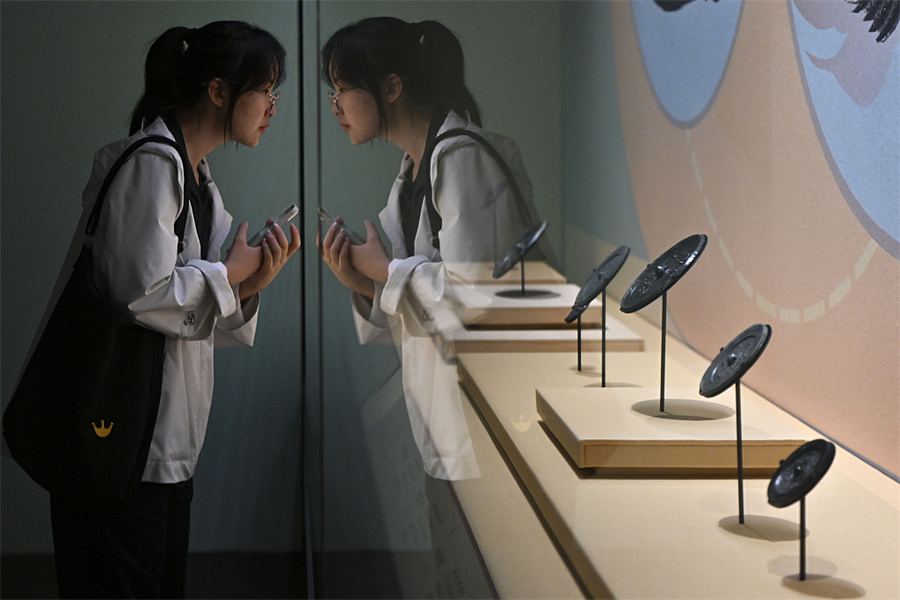Museums in bay area form alliance

A woman visits the Guangdong Museum in Guangzhou, Guangdong province, May 2, 2023. [Photo/VCG]
24 key institutes from Guangdong, HK and Macao join forces to spread culture
Museums from Guangdong province and the Hong Kong and Macao special administrative regions announced the establishment of the Guangdong-Hong Kong-Macao Greater Bay Area Alliance of Museums at the Chinese Museum Studies Conference on Friday in Guangzhou, Guangdong province.
The first members of the alliance are 24 key museums, including Guangdong Museum, Shenzhen Museum, Hong Kong Museum of History and Macao Museum of Art, with more to join in the future. As of December last year, there were 377 museums in Guangdong province.
"These museums are complementary. They can work together to present high-quality shows through the alliance," said Liu Shuguang, head of the Chinese Museums Association.
Museums from Hong Kong and Macao have more experience communicating and cooperating with museums from abroad, while museums from Guangdong province have a closer relationship with their counterparts from the rest of the country. They can collaborate to better use their resources to offer good exhibitions, and help spread Chinese culture to wider audiences from home and abroad.
"It's common to see economic cooperation in the Guangdong-Hong Kong-Macao Greater Bay Area. I think cultural exchanges and cooperation are also important," said Liu.
Xiao Haiming, director of Guangdong Museum, said that some of their joint exhibitions with counterparts from Hong Kong and Macao have won many awards and received warm welcome from visitors. Their show Focus: Acclimation of Art Between China and the West in the 18th-19th Century is going to be exhibited in Macao later this year.
"We have long cooperated with museums from Hong Kong and Macao. The establishment of the museum alliance in this area will offer more cooperation," said Xiao at the opening of the first Chinese Museum Studies Conference held in Guangzhou on Friday.
The conference attracted museum directors, scholars, experts and representatives of cultural institutions from home and abroad to discuss the high-quality development of museums in the new era.
"A healthy development of museums is not only about an increase in the number of museums and visitors and the expansion of museums' sizes, but also the building of a theoretical system," said Liu.
According to Liu, issues such as how to deal with the rising demand for tickets while museum accommodation is limited, how to transform the archaeological discoveries into a good show and how to offer better public services can not be completely resolved if there's no theoretical support.
"The building of China's museological study is a little bit late compared to its highly developed museums. But better late than never," Liu added.
Luo Wenli, deputy director of the National Cultural Heritage Administration, said that museums have become popular in the past few years due to their good exhibitions. He hoped scholars and museum workers can shoulder the mission of building Chinese museology and spreading the culture and stories behind relics to a wider audience.
























